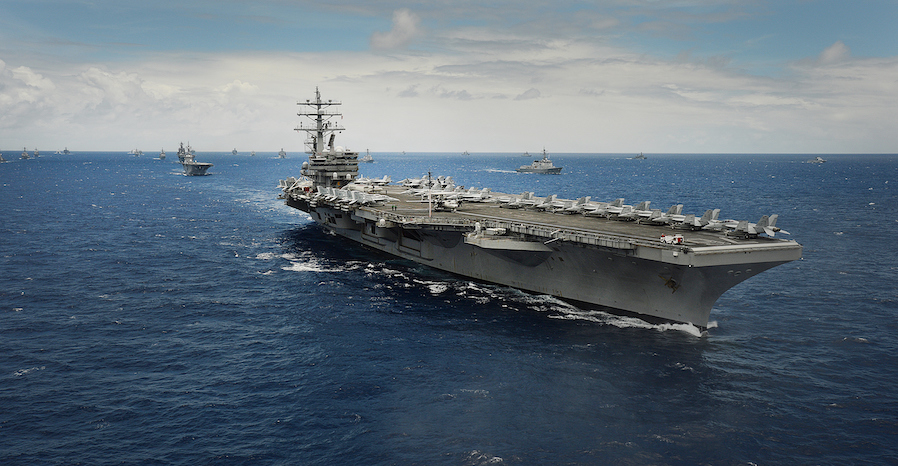Beyond NAVSEA: 5 Questions to Ask a DoD Metal Fabrication Company

Do you have navy welders who are NAVSEA and AWS certified?
This is a qualifying question a Department of Defense (DoD) contractor might ask when determining which precision metal fabrication company will participate in the bid process. If the answer is no, there’s little chance the company will be in the running.
NAVSEA welding certifications are an indication of a company’s capabilities and level of dedication to work on DoD projects. While it’s important to confirm their welding capabilties and inspection processes, it’s no guarantee that a company will produce results that conform to specifications and products that arrive on time.
Get answers to these questions to determine which DoD metal fabricators to include in the bid process.
Which defense contractors are you qualified to perform work for?
Many large defense contractors have a short list of approved vendors. The list of vendors that they actually issue work to will be even smaller. And the ones they say they want to work with again and again reduces the pool even further.
Pay close attention to a metal fabrication company’s customer base. Beyond asking who they’ve performed work for, ask who they’ve performed repeat work for. That may be most telling. Fox Valley Metal-Tech, for example, has repeatedly been called upon to perform work for DoD contractors like Raytheon, General Atomics, Lockheed Martin, Leonardo DRS, and others.
What complex military projects have you worked on?
The definition of “complex” can vary widely among metal fabricators. At Fox Valley Metal-Tech, it involves more than simply achieving tight tolerances. We often describe our navy welders as industrial artists for their ability to lay a perfect bead and transform a hunk of metal into a complex weldment that seemingly defies physics.
Examples include complex electrical enclosures like those produced for the USS Gerald R. Ford-Class (CVN 78) new generation nuclear aircraft carrier. The large enclosures which can measure 10-feet across house electromagnetic aircraft launching systems (EMALS) and advanced arresting gear (AAG) systems. These units are made of O-temper annealed aluminum which is prone to warping and movement, yet skilled craftsmen are able to hold tolerances within 0.010-inch across large expanses.
READ THE CASE STUDY: DoD Custom Electrical Enclosures
What engineering services do you provide?
Detailed drawings and 3D software files will accompany a purchase order. However, to transform a concept “on paper” to a completed weldment requires many additional processes and engineering capabilities. Most drawings need to be transformed into working documents for specific steps of the manufacturing process.
Developing jigs and fixtures is one area in which an in-house team of engineers is invaluable, helping to ensure tight tolerances and repeatability. Engineers also help with revision controls by reviewing prints and ensuring that any changes and processes are well-documented.
RELATED ARTICLE: Benefits of an In-House Engineering Team
Do you perform CARC painting in-house?
It’s a common practice to send out fabricated products for painting by a third party. These outsourced finishers need to be on a qualified vendor list just like the metal fabricator and may be few and far between. Transporting large units over long distances adds inherent risks of damage. Shipping products back and forth to a painting facility also adds unnecessary costs and delays.
Ideally, a project flows through a single, streamlined facility — from its raw material state until it’s packaged and shipped to its final destination. Fox Valley Metal-Tech has on-site painting facilities that meet Chemical Agent Resistant Coating (CARC) military specifications. The systems and processes have also been audited by Raytheon and Lockheed Martin to ensure compliance with their standards.
RELATED ARTICLE: Metal Fabrication Painting Challenges
What can we expect on a facility tour?
A facility tour can tell a lot about a company’s dedication to quality and whether they’re capable of completing the work at hand. It also speaks to how they value their employees. When embarking on a tour of a facility, pay attention to how work flows through the building, its cleanliness and organization, filtration systems, and whether it’s climate controlled.
CNC machining equipment, cranes, tooling, painting facilities, and work bays indicate whether they’ve invested in their internal infrastructure. Likewise, adequate space for DFARS material inventory, inspection sites, product storage, staging, loading docks, and other functions can be an indication of how lean their operations are and whether they’re cramped for space. In addition to equipment, enterprise resource planning (ERP) software provides detailed data about workflows, on-time delivery, defect rates, return rates, and more.
As you can see, it takes more than AWS and NAVSEA certifications to be qualified as a DoD supplier. We encourage you to take the next step in your vetting process by requesting a tour of Fox Valley Metal-Tech, and downloading our Custom Metal Fabrication RFQ Guide below with helpful insights.
